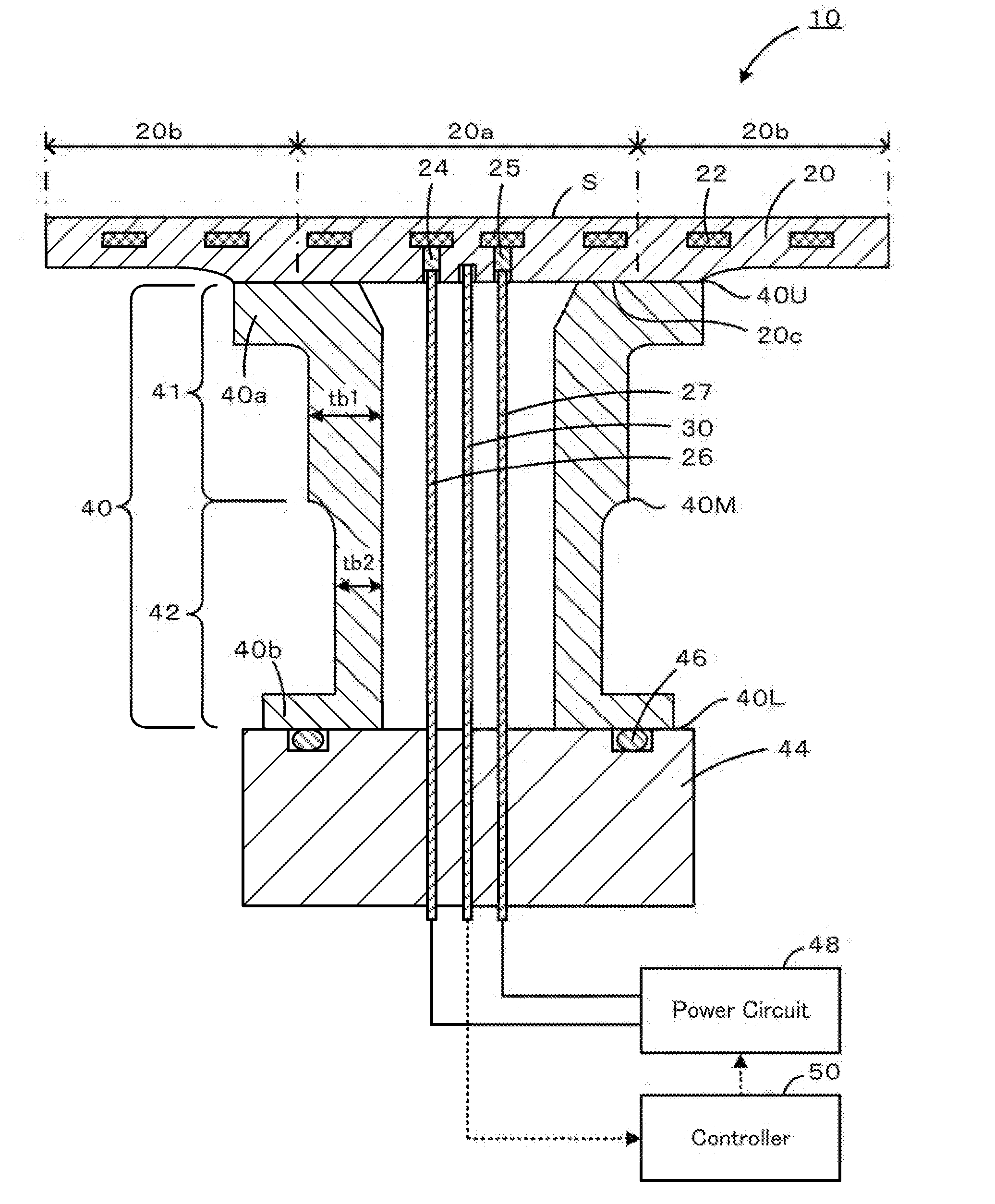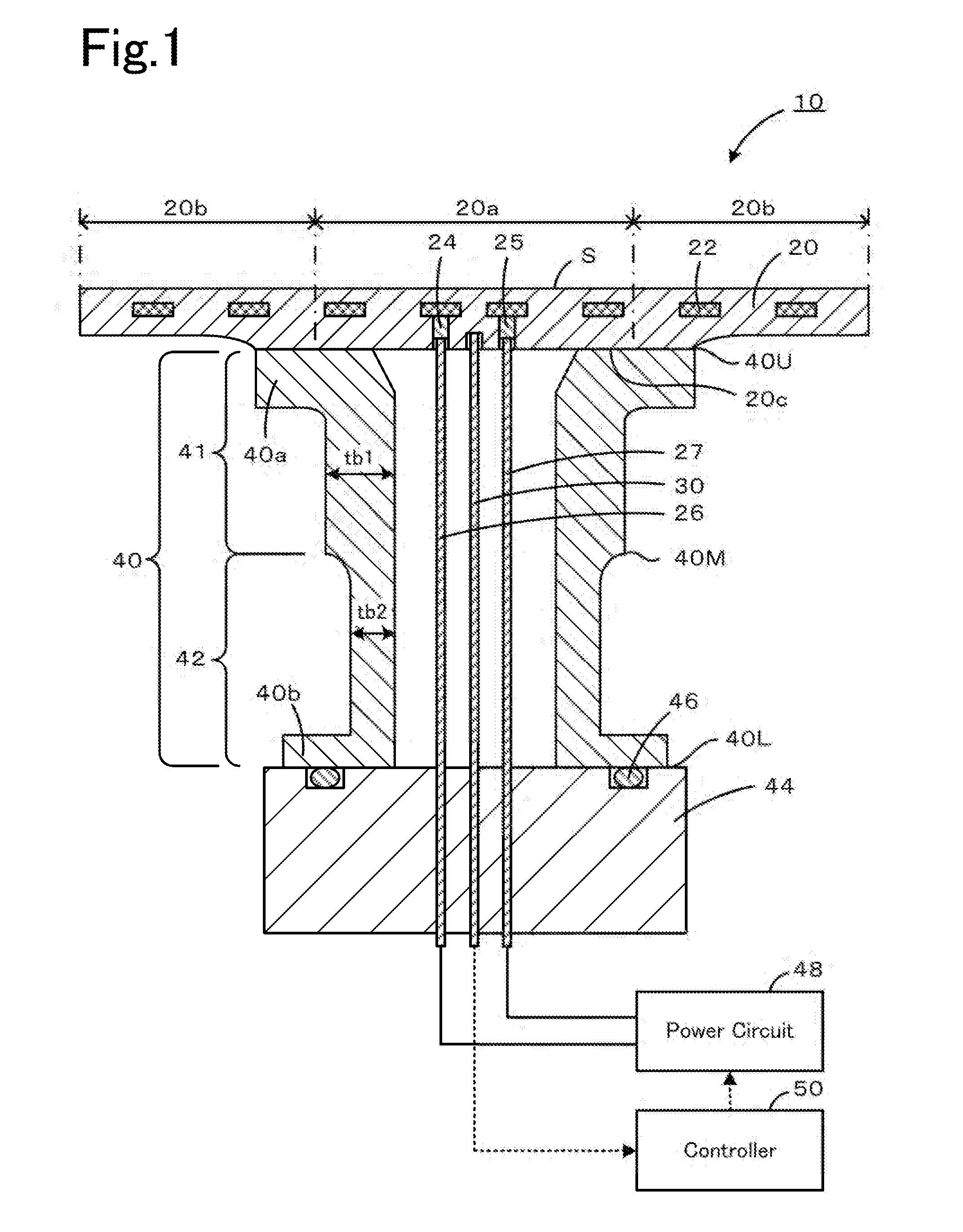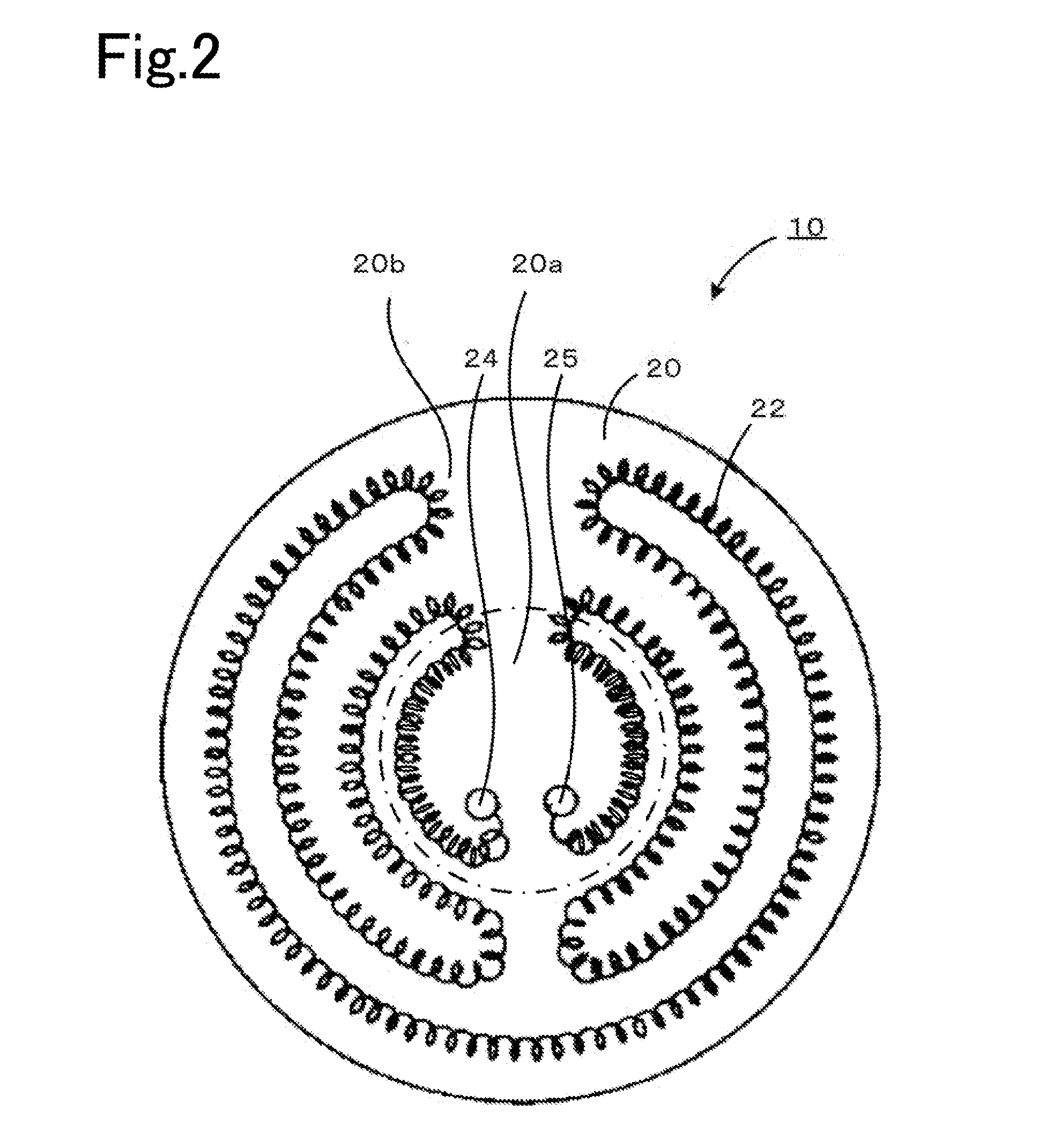Heating device and semiconductor manufacturing apparatus
a manufacturing apparatus and heating device technology, applied in the direction of heating arrangements of hot plates, heating elements, coatings, etc., can solve the problems of uneven thickness of a film obtained by cvd, degraded temperature control properties, and long time to achieve stable temperature, so as to reduce the number of turns, reduce the density of heating, and increase the temperature of the central portion of the ceramic base.
- Summary
- Abstract
- Description
- Claims
- Application Information
AI Technical Summary
Benefits of technology
Problems solved by technology
Method used
Image
Examples
experimental examples 1 to 11
[0049]The heating device 10 shown in FIG. 1 was prepared for each of Experimental examples. FIG. 4 and Table 1 show the dimensions of the heating device 10 of each of Experimental examples. A specific preparation procedure is described below.
[0050]First, an AlN molded body was prepared. The AlN raw material powder used had a purity of 99%. A resistance heating element constituted by a coil spring composed of Mo was buried in the AlN molded body so as to be distributed throughout the AlN molded body. The resistance heating element was buried in such a manner that the resistance heating element started at a vicinity of the center of the AlN molded body, was arranged over the entirety of the AlN molded body in the manner of a single continuous line, and returned to the vicinity of the center. A positive terminal was attached to an end of the resistance heating element and a negative terminal was attached to the other end of the resistance heating element. The central portion of the AlN...
PUM
| Property | Measurement | Unit |
|---|---|---|
| thickness | aaaaa | aaaaa |
| thickness | aaaaa | aaaaa |
| thickness tb1 | aaaaa | aaaaa |
Abstract
Description
Claims
Application Information
 Login to View More
Login to View More - R&D
- Intellectual Property
- Life Sciences
- Materials
- Tech Scout
- Unparalleled Data Quality
- Higher Quality Content
- 60% Fewer Hallucinations
Browse by: Latest US Patents, China's latest patents, Technical Efficacy Thesaurus, Application Domain, Technology Topic, Popular Technical Reports.
© 2025 PatSnap. All rights reserved.Legal|Privacy policy|Modern Slavery Act Transparency Statement|Sitemap|About US| Contact US: help@patsnap.com



